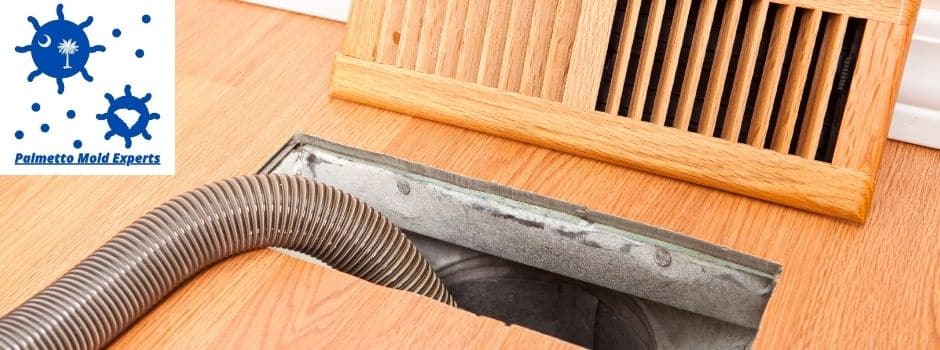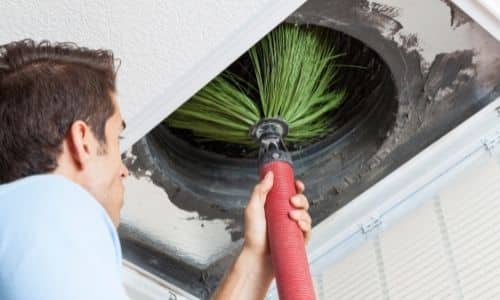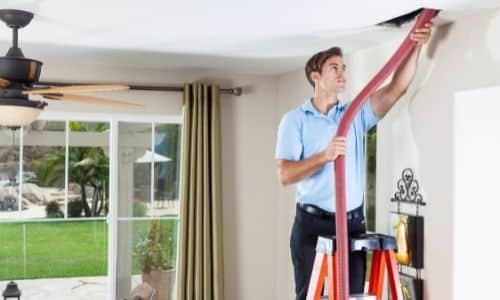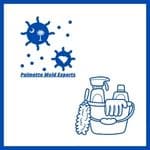
Indoor Air Quality & Mold Prevention In South Carolina
Are you concerned about the quality of the air inside your apartment or building in South Carolina? Are you aware that there are dozens of substances that can cause mold and other indoor air quality problems? Read on for helpful tips to keep your indoor air quality high. Listed below are some of the main sources of these chemicals. Learn more about Mold spores, mold-causing bacteria, and other pollutants and how to prevent them from entering your home.
Mold growth
Inspect your South Carolina home for signs of water damage and moisture. If there are water stains on your walls and ceilings, there could be hidden water sources. Look under sinks and bathrooms for water, and make sure the air conditioning is running and your refrigerator is not leaving drip pans of water. Dry any damp building materials or furnishings as soon as possible, and keep the humidity level as low as possible. Exhaust fans should be vented outdoors.
Molds need moisture to grow. Their growth rate is limited by their tolerance for temperature and humidity. They can survive in the presence of water but need an average of 90% ERH to grow. In order to grow, molds need moisture to reproduce. Wet surfaces and materials are perfect breeding grounds for molds. The spores produced by molds can irritate your skin, cause coughing and wheezing, and damage your home's structure.
Molds produce spores and cellular debris into the air. These particles contain cell wall materials and are airborne for long periods. Exposure can cause health effects, including fatigue, headaches, and even asthma. Some cellular debris from mold can cause harmful chemicals known as endotoxins. You should avoid the areas in your South Carolina home with high mold levels and consider using a quality antimicrobial to protect your home.
You can prevent indoor air pollution by letting outdoor air into your home. This will also reduce allergens and moisture in your home. Molds have been known to cause a wide range of health problems, including wheezing and asthma. The color of the mold does not determine its health effects, so you should be careful when determining the presence of mold. Moreover, you should avoid cleaning mold-infected areas if you have allergies or asthma.
Mold spores
Mold and bacteria in the air can cause a variety of health problems. They can emit spores, which are organic compounds in gaseous state that can easily travel throughout a building. These spores have a foul odor and can contribute to complaints about indoor air quality. Microbiological growth can also cause the release of spores, which can cause a variety of physical and mental health conditions.
There are no federal standards for mold spore concentrations, and scientific research into the health risks is ongoing. There are many types of mold, and not all molds are harmful to humans. These organisms produce allergens, irritants, and toxins. People's reactions to mold are different depending on their age and their allergies, so the same amount of exposure may cause a range of health effects.
To grow, mold needs moisture. It can come from several sources, including pipe leaks, rain storms, or condensation. If the moisture level is high, the mold can form on the surface and grow. Another source of moisture is high relative humidity. If the relative humidity is high, the mold will grow and spread, which can result in allergic reactions. While mold growth can be controlled, it can't be eliminated from materials.
A poorly ventilated home is another source of mold. Mold is necessary for the natural decay of organic matter, so letting outside air in is important to controlling moisture levels. It is also important to keep the home clean to reduce allergens. Allergens affect indoor air quality. As a result, mold growth can be a significant source of moisture. Keeping a home clean is one of the best ways to improve the quality of the air in the home.
Mold-causing bacteria
The temperatures within a building support the growth of a wide variety of molds and bacteria. Most bacteria and molds grow at temperatures between 15deg C and 30deg C. Human source bacteria grow between 35deg C and 44deg C. Regardless of the temperature in your home, it is important to be aware of the potential for mold growth. A building that is consistently damp or has a leaky roof can be at risk for mold.
Indoor mold is an unsightly, smelly substance that damages the substances it lives on. In addition to destroying the materials it lives on, it can cause respiratory problems and allergies. Studies have linked the presence of indoor mold with toxic mold disease and sick building syndrome. Fortunately, there are some steps that you can take to prevent or alleviate the effects of indoor mold. Read on to learn more about the importance of indoor air quality for your health.
Toxins are compounds produced by bacteria and mold. These compounds are nonvolatile organic molecules that require extra work on the part of the organism to produce. Most types of mold do not produce these toxins, but scientists have identified more than 400 different types. Unlike MVOCs, mycotoxins are nonvolatile and can cause significant damage to the environment. Furthermore, one mold strain can produce more than one toxin depending on its growing conditions and substrate.
The main difference between molds and bacteria is the way they reproduce. Mold is a fungus and reproduces in multicellular filaments called hyphae. The filamentous fungi reproduce by budding or branching, while bacteria regenerate by binary fission, meaning the parent cell divides into two smaller cells. Unlike bacteria, mold reproduces in a different way. It grows by producing microscopic spores (or "spores") that act like seeds.
Mold-causing chemicals
A proper indoor air quality plan is essential to prevent the growth of mold and bacteria in your home. You can control the levels of humidity by using exhaust fans and controlling the moisture in the air. You should also check for water stains on walls and ceilings, especially around sinks and bathrooms. Avoid letting water stand in drip pans in air conditioning units and refrigerators. Make sure to dry all damp building materials and furnishings promptly.
In addition to spores, mold releases cellular debris into the air, including cell wall material. This debris can remain airborne for a long time and travel through tiny cracks and crevices. The particles of mold can affect humans and cause health problems. The amount of exposure to mold varies by age and the type of allergy a person has. Inflammation, headaches, and fatigue are some of the common symptoms that are associated with exposure to mold.
Some homes are better ventilated, while others have more problems with mold. A properly ventilated home can help control moisture, which is essential for mold growth. Also, regular household cleaning can help reduce allergens, which affect indoor air quality. Lastly, regular household cleaning is a great way to control dust and dirt. Keeping your home clean is a good way to control allergens, which are a major source of moisture for mold growth.
While these solutions can help improve indoor air quality, they may not be sufficient. Mold and bacteria can produce MVOCs, which are vapors of hydrocarbons. If the vapors are inhaled, they can cause health problems and even cancer. This problem can be exacerbated by a variety of sources, including laundry, food, and unvented space heaters. A good way to control these sources of moisture is to use supplemental dehumidification.
Mold remediation
While mold growth and indoor air quality in South Carolina are very important, you may not know much about them. As they are found in almost every environment, they can affect indoor environments. Mold can form on building materials and is not always easy to remove. But you can control their growth by controlling the amount of moisture, responding quickly to water leaks, and providing adequate ventilation. This fact sheet will provide basic information about mold growth and its health implications.
To prevent the spread of mold and other toxins in your home, you must clean the affected area immediately. You should use wet/dry vacs and dehumidifiers to dry the area. You should also get rid of porous materials that are in contact with the sewage. If you can't remove the mold yourself, you can hire a professional to assess and test the problem. To keep the contaminated air out of the rest of the building, you can build sloping ground away from the building foundation.
Excess moisture creates an ideal environment for mold growth. When this happens, the spores are released into the air. These spores contain cellular debris from the mold and bacteria. They are airborne for a long time and can travel through even the smallest cracks and crevices. Moreover, some molds can trigger allergic reactions and even cause disease. It is therefore essential to get mold remediation for indoor air quality and mold prevention for better health.
While mold is found on many surfaces, it is more common in buildings with excessive moisture. Often, a building's moisture problem goes unnoticed, and without remediation it can become very damaging. Palmetto Mold Experts can perform commercial mold remediation. We use specialized equipment to remove mold in commercial settings in South Carolina. If you suspect a mold problem, contact us today.


Need help with a mold problem in South Carolina? Find the mold service that is right for you:
- Mold Inspection
- Mold Remediation
- Mold Removal
- Mold Testing
- Commercial Mold Remediation
- Commercial Mold Removal

